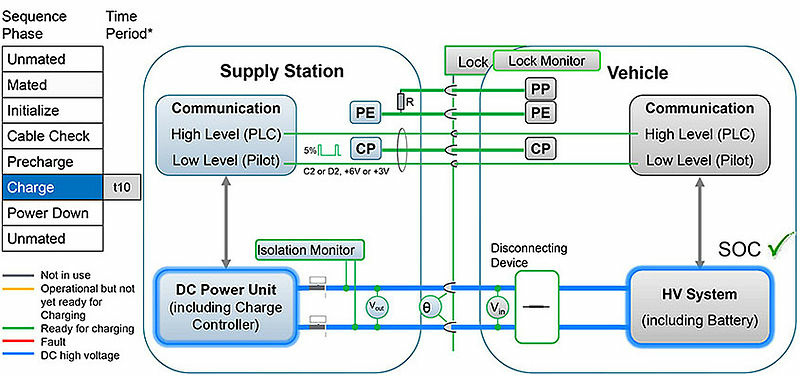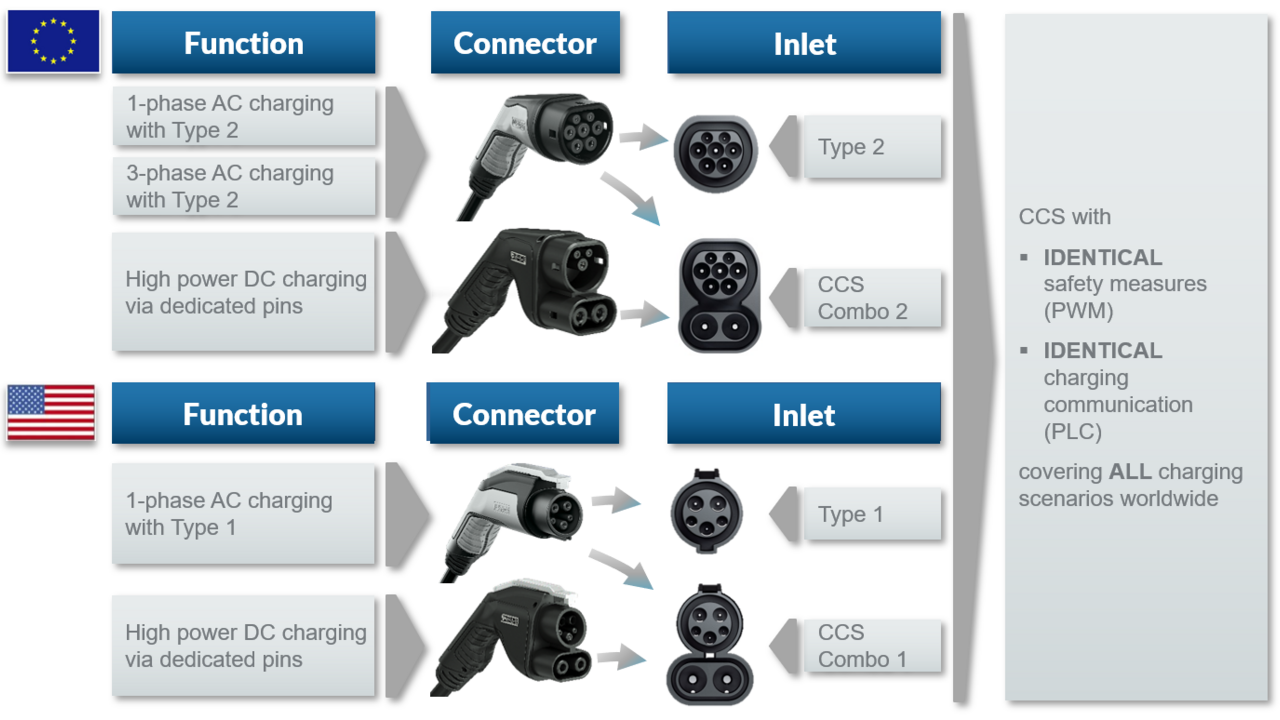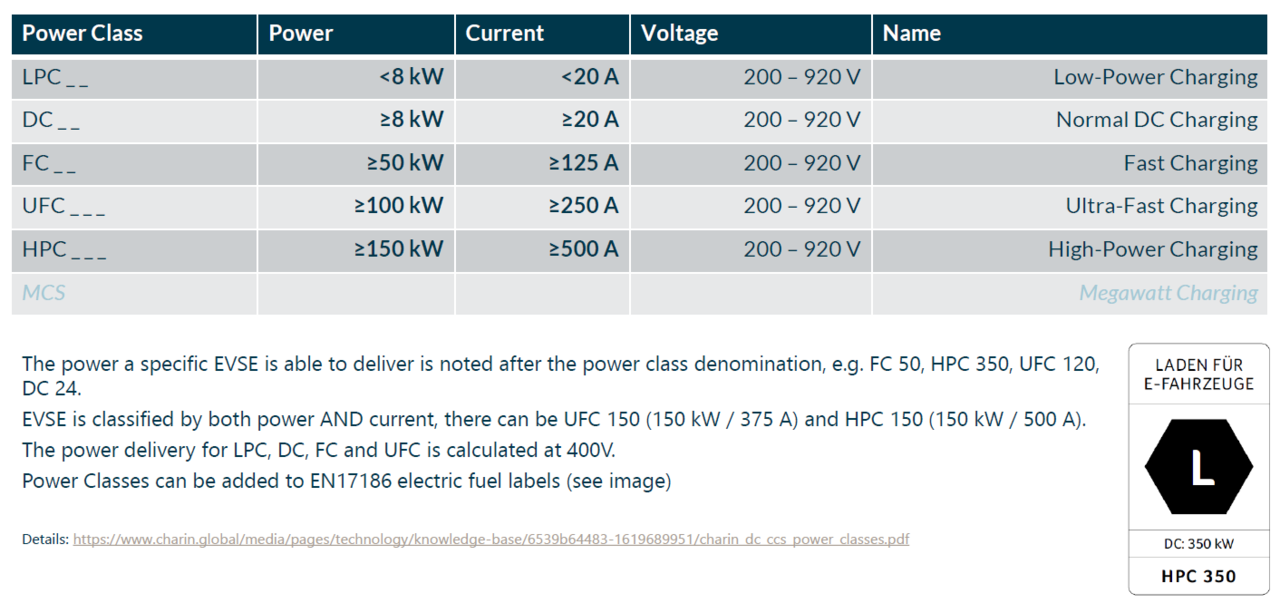High Power Charging Technology (HPC)
All 3D models kindly provided by Phoenix Contact.
CCS Type 1 HPC connector
CCS Type 1 inlet
CCS Type 2 HPC connector
CCS Type 2 inlet
If you want to know more about our member Phoenix Contact or the technical specifications, please visit:
CCS Specification
The illustrated Combined Charging System Implementation Guideline describes the CCS’ main features, including the charging process itself as well as safety, user authentication, payment authorisation and load balancing functions.
It also provides guidance as to which standards have been implemented in the system. As such, the document makes it easier for interested parties – such as carmakers and manufacturers of charging stations – to refer to the right standards documentation in the right versions when developing or upgrading their products.
Click here if you want to get Technical Details about the Combined Charging System (CCS).
Functional-Temporal CCS Step model
The CharIN e.V. works on a functional and temporal step model describing the features of CCS in the next years.
CCS Design Guide
The CCS development team created this universal solution by combining multiple existing standards and technologies, resulting in an innovative new product. It has created this Design Guide to assist other companies with an interest in electric mobility – including carmakers, municipal power utilities, manufacturers of charging equipment and so on – to understand the standards involved and the relationships between them, as well as the charging architecture, safety concept, and communication between the electric vehicle and the charging station.
With the Design Guide, companies can review detailed illustrations of the charging sequence with step-by-step descriptions. It also shows how pulse width modulation is used for low-level communication between the vehicle and the charging equipment, along with a layer-by-layer description of high-level communication based on PLC. The Design Guide also features an extensive chapter on safety. This includes information on all the relevant standards used, the product’s safety concept, possible errors and how they are resolved.
The Design Guide concludes with an overview of all the standards included in the entire CCS architecture and a partial list of some of the major suppliers of equipment related to the CCS solution.

Latest CCS implementation notes
Our Focus Group experts work on the challenges in the field. In this section you will find the most recent information to improve interoperability of your CCS products.
Some applications of PnC do not use load management to be still interoperable the following guide is a solution. This guide focuses on the use case high power charging (HPC) where power is always available on EVSE Side.
It specifies requirements for a special service allowing to reduce the implementation of ISO 15118- 2 to a minimum without causing interoperability issues to other devices with reduced implementations and full implementation of ISO 15118-2.


